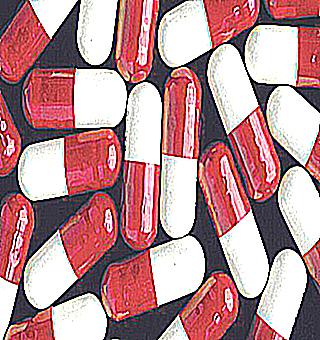Home >
Erectile Dysfunction >
Why blood appears in semen
Why blood appears in semen

The appearance of blood particles in the ejaculate may be isolated, or it may be detected regularly. Sometimes a similar phenomenon is provoked by a previous sexual intercourse, then there is reason to think that the red shaped elements have penetrated into the biological fluid from the woman's genital tract. In this case, to confirm the presence of blood cells in the semen, a "condom test" is performed, and the spermogram of the ejaculate collected in a condom is studied.
Since the urinary and reproductive systems in men intersect, blood in the semen is associated with a violation of the integrity of the integumentary epithelium of the bladder, kidneys and ureters, which requires a more detailed study of these organs.
Types of hemospermia
Depending on how the shaped red elements got into the seed, two types of hemospermia are distinguished:
- False - manifested by the presence of bloody streaks in the biological fluid, which indicates the urethral origin of the phenomenon,
- True - manifested by a brown tint of ejaculate, this suggests that the source of bleeding is in the following organs of the reproductive system:
Anatomy of the vas deferens in the male body
Sperm with blood can be released if there are pathological changes in one of the organs involved in spermatogenesis. They are:
Seminal vesicles are double hollow organs that produce and store the biological components that make up the seed. They are located behind the bladder and border the base of the prostate. These structures are well visualized using TRUS. And their functional activity is regulated by male sex hormones - androgens.
From the inner surface of the base of the prostate, each of the above-described vesicles is approached by the final section of the vas deferens, through which spermatozoa are transported from the testicles. Merging with the canal of the seminal vesicle, they form the ejaculatory or ejaculatory duct. Further, passing through the inner part of the prostate gland, it opens on the back of the urethra, in its prostatic section, next to the seminal mound. Here the ejaculate enters the lumen of the urethra.
If the blood in the spermogram is determined in representatives of a strong part of humanity who have not reached the age of forty, then most often such a manifestation is transient in nature, which is not associated with pathology. The regular presence of red shaped elements in the seed should cause concern, when at least ten ejaculations are accompanied by a similar phenomenon.
Causes of hemospermia
- Infectious and inflammatory diseases: orchitis, vesiculitis, epididymitis and their consequences - urethral strictures.
- Chronic course of prostatitis.
- Condylomas in the urethra.
- Presence of calcifications in the prostate.
- The presence of stones in the ejaculatory duct and Seminal vesicles.
- Adenoma and malignant tumors of the prostate.
- Secondary neoplastic changes in the seminal vesicles.
- Cystic formations of seminal vesicles and prostate.
- Vascular pathology of the pelvis and prostate.
- Injuries to the perineum of the external genitalia.
- Consequences of diagnostic manipulations - biopsies.
- Arterial hypertension.
- Hemorrhagic diathesis.
What to do
To find out why hemospermia appeared, the doctor will need:
- The frequency and total number of such manifestations,
- Color characteristic of sperm,
- Presence of concomitant symptoms,
- Injury related
- Information about medications taken and medical procedures performed the day before
- The presence of chronic diseases,
- Sexual history,
- Whether the patient was in regions epidemiologically disadvantaged for tuberculosis.
Important: additional symptoms characteristic of the inflammatory pathology of the genitourinary system speak in favor of the infectious nature: frequent urination, discharge from the urethra, general weakness, swelling and hyperemia of the scrotum.
As for the treatment of hemospermia in patients under the age of forty, the main efforts of the doctor should be aimed at normalizing the psychological state of the patient and reducing the level of anxiety.
If genitourinary and other somatic, hematological or vascular pathologies are detected, therapy consists in treating the underlying disease. It can be carried out both conservatively - with the help of medications, and surgically. Its variety is considered to be coagulation of varicose veins of the prostate. With the help of endoscopic techniques, operations are performed for persistent bleeding in the area of the seminal vesicles, ampulla sections of the ejaculatory ducts.If a cancerous tumor is diagnosed, then a special complex treatment is used.



























